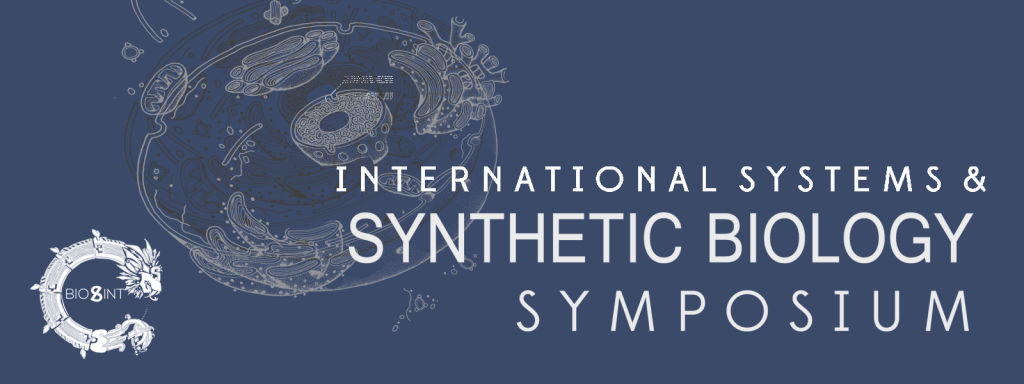Team:BIOSINT Mexico/symposium
From 2014.igem.org
| Line 31: | Line 31: | ||
<h1> INTERNATIONAL SYSTEMS AND SYNTHETIC BIOLOGY SYMPOSIUM </h1> | <h1> INTERNATIONAL SYSTEMS AND SYNTHETIC BIOLOGY SYMPOSIUM </h1> | ||
<p> The First International Systems and Synthetic Biology Symposium took place in Tecnológico de Monterrey Campus Querétaro on April 25th, 2014. The speakers that headed the agenda were:<br/><br/></p> | <p> The First International Systems and Synthetic Biology Symposium took place in Tecnológico de Monterrey Campus Querétaro on April 25th, 2014. The speakers that headed the agenda were:<br/><br/></p> | ||
| - | <p style="vertical-align:text-top;">PhD. J. Rubén Morones who presented “Approaches to Engineer and Design Antimicrobial Therapeutics” in which he explained three engineering approaches to resolve some of the challenges in antibiotic development. The first involves exploring potentiation of current antibiotics using novel and naturally existing therapeutic adjuvants (such as silver and supplementary metallic micronutrients). The second includes the work in progress to develop novel drug delivery systems, using Nanotechnology and Synthetic Biology. Finally, the third addresses the commitment to discover novel antimicrobial molecules and therapies. </p> | + | <p style="vertical-align:text-top;">PhD. J. Rubén Morones who presented “Approaches to Engineer and Design Antimicrobial Therapeutics” in which he explained three engineering approaches to resolve some of the challenges in antibiotic development. The first involves exploring potentiation of current antibiotics using novel and naturally existing therapeutic adjuvants (such as silver and supplementary metallic micronutrients). The second includes the work in progress to develop novel drug delivery systems, using Nanotechnology and Synthetic Biology. Finally, the third addresses the commitment to discover novel antimicrobial molecules and therapies.<br/><br/> </p> |
| + | <p style="vertical-align:text-top;">PhD. César González who presented “Assembly of Carboxysome”, explained how this bacterial microcompartiment is important for cyanobacteria and their dependence to concentrate carbon dioxide near RuBisCo while minimizing the unproductive side reaction with oxygen.<br/><br/> </p> | ||
| + | <p style="vertical-align:text-top;">PhD. Henrik V. Scheller who talked about “Plant synthetic biology: Engineering of Plants for use as Biorefinery Feedstocks”, in which he explains about the developing technology to convert plant biomass to fuels and how The Feedstocks Team at the Joint Bioenergy Institute is using synthetic biology tools to engineer high yielding plants that are more easily degraded into fermentable sugars by using the rerouting of metabolic pathways and design of artificial transcriptional networks to control gene expression.<br/><br/> </p> | ||
</body> | </body> | ||
</html> | </html> | ||
Revision as of 01:12, 2 October 2014

INTERNATIONAL SYSTEMS AND SYNTHETIC BIOLOGY SYMPOSIUM
The First International Systems and Synthetic Biology Symposium took place in Tecnológico de Monterrey Campus Querétaro on April 25th, 2014. The speakers that headed the agenda were:
PhD. J. Rubén Morones who presented “Approaches to Engineer and Design Antimicrobial Therapeutics” in which he explained three engineering approaches to resolve some of the challenges in antibiotic development. The first involves exploring potentiation of current antibiotics using novel and naturally existing therapeutic adjuvants (such as silver and supplementary metallic micronutrients). The second includes the work in progress to develop novel drug delivery systems, using Nanotechnology and Synthetic Biology. Finally, the third addresses the commitment to discover novel antimicrobial molecules and therapies.
PhD. César González who presented “Assembly of Carboxysome”, explained how this bacterial microcompartiment is important for cyanobacteria and their dependence to concentrate carbon dioxide near RuBisCo while minimizing the unproductive side reaction with oxygen.
PhD. Henrik V. Scheller who talked about “Plant synthetic biology: Engineering of Plants for use as Biorefinery Feedstocks”, in which he explains about the developing technology to convert plant biomass to fuels and how The Feedstocks Team at the Joint Bioenergy Institute is using synthetic biology tools to engineer high yielding plants that are more easily degraded into fermentable sugars by using the rerouting of metabolic pathways and design of artificial transcriptional networks to control gene expression.
 "
"
